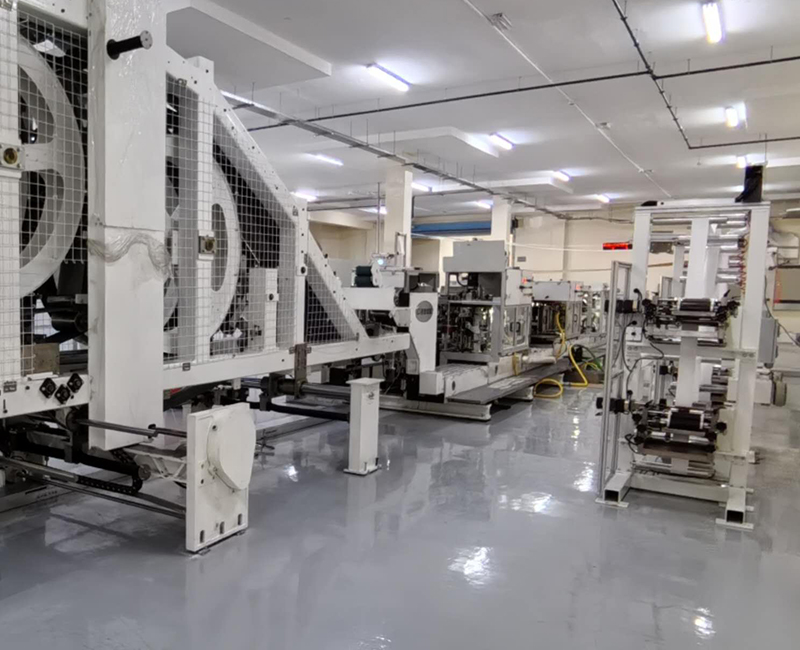Revolutionizing Bulk Material Handling: The Advancements of Automatic Sack Filling Machines
Release time:2025-05-27 Classification:Knowledge
In industries that rely on bulk material packaging, efficiency, precision, and operational safety are paramount. Enter the automatic sack filling machine—a sophisticated solution designed to streamline the process of packaging dry or granular materials into sacks, bags, or other containers. This technology has become indispensable in sectors such as agriculture, construction, mining, and food processing, where high-volume material handling demands both speed and accuracy. Below, we explore the mechanics, benefits, and applications of these advanced systems.

Core Functionality and Design Principles
Automatic sack filling machines are engineered to handle a wide range of materials, from fine powders to coarse aggregates. Their operation typically involves four key stages:
- Material Feeding: Bulk materials are conveyed into the machine via augers, vibratory feeders, or pneumatic systems. Advanced models incorporate adjustable flow rates to accommodate varying material densities.
- Weighing and Measurement: Integrated load cells or gravimetric systems ensure precise weight control, often achieving accuracies within ±0.1–0.5% of the target fill weight.
- Bag Placement and Filling: The machine automatically positions empty sacks beneath the filling spout. Clamping mechanisms or robotic arms secure bags in place to prevent spillage during filling.
- Sealing and Discharge: Once filled, sacks are heat-sealed, stitched, or closed using other methods before being discharged onto conveyor belts for palletizing or storage.
Modern systems often include touchscreen interfaces for operators to set parameters such as bag size, fill speed, and batch quantities. Some models also feature self-cleaning mechanisms to minimize cross-contamination between material batches.
Operational Advantages
The adoption of automatic sack filling machines offers measurable improvements in productivity and cost-effectiveness:
- Speed: Capable of filling 10–60 sacks per minute (depending on material type and bag size), these machines outperform manual labor by orders of magnitude.
- Accuracy: Automated weight calibration reduces product giveaway and ensures compliance with regulatory standards.
- Labor Savings: By minimizing human intervention, facilities can reallocate staff to higher-value tasks while reducing ergonomic risks associated with repetitive lifting.
- Material Conservation: Closed-loop systems prevent dust emissions and material waste, enhancing workplace safety and sustainability.
Industry-Specific Applications
Versatility is a hallmark of contemporary sack filling systems. For instance:
- Agriculture: Fertilizers, animal feed, and seeds require contamination-free packaging with strict moisture control.
- Construction: Cement, sand, and aggregates demand rugged equipment capable of handling abrasive materials.
- Food Processing: Hygienic designs with stainless steel components meet FDA and EU food safety standards for products like flour, sugar, and spices.
- Chemicals: Explosion-proof configurations are available for packaging volatile or hazardous substances.
Technological Innovations
Recent advancements have further elevated the performance of these machines:
- AI-Powered Optimization: Machine learning algorithms analyze historical data to optimize fill cycles and predict maintenance needs.
- Modular Design: Interchangeable components allow quick reconfiguration for different bag types (e.g., woven polypropylene, paper, or FIBCs).
- IoT Integration: Real-time monitoring via cloud platforms enables remote diagnostics and inventory management.
Future Outlook
As industries increasingly prioritize automation, the demand for intelligent sack filling solutions will continue to grow. Emerging trends include hybrid systems that combine filling with robotic palletizing, as well as energy-efficient designs powered by renewable energy sources. Furthermore, advancements in sensor technology promise even greater precision in handling irregularly shaped or cohesive materials.
In conclusion, automatic sack filling machines represent a critical evolution in industrial packaging. By blending mechanical ingenuity with digital intelligence, these systems not only enhance operational efficiency but also pave the way for smarter, more sustainable manufacturing ecosystems. For businesses seeking to future-proof their operations, investing in this technology is no longer optional—it’s a strategic imperative.






